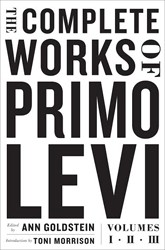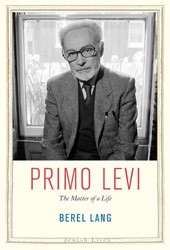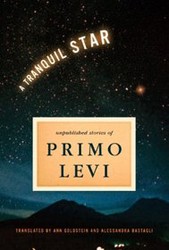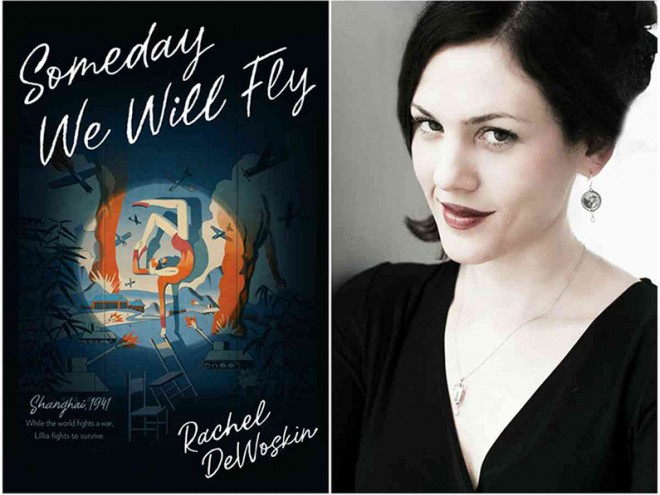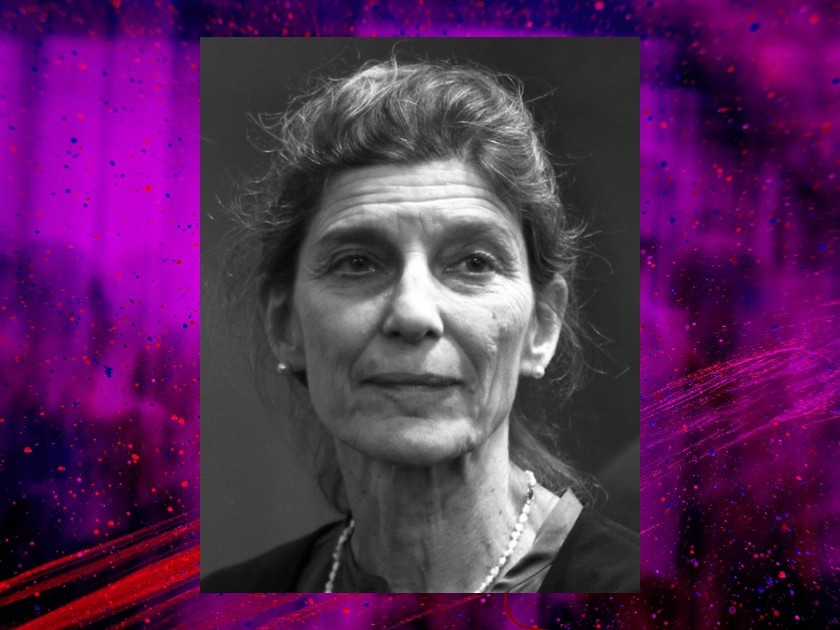
Photo Credit: Ethan Segal
Ann Goldstein is interviewed by Merrill Leffler about the monumental task of translating Primo Levi’s vast body of work, an endeavor that culminated in three expansive volumes. This interview originally appeared in the 2017 issue of Jewish Book Council’s literary journal, Paper Brigade. This July 31st marks the 100th anniversary of Primo Levi’s birth.
Merrill Leffler: The Complete Works has been a major undertaking and achievement — the translation of fourteen books by Primo Levi completed by ten translators, with supporting materials that include a detailed chronology of Levi’s life; nearly seventy pages of notes about the publication of each book; and essays on Levi in America and the publication of his works throughout the world. How did all this come about?
Ann Goldstein: The idea was not mine at all but that of Robert Weil, now the editor in chief of Liveright, an imprint of W. W. Norton. He felt strongly about the importance of Levi’s work and wanted to bring all of it together, as he had done for The Complete Works of Isaac Babel, edited by Natalie Babel and published by Norton in a beautiful edition nearly fifteen years ago. So in 1998, when Bob set about obtaining the rights to Levi’s works, he didn’t realize what he was in for. Originally he expected to put together the older translations in a couple of volumes, but, as he writes in “Primo Levi in America,” obtaining the rights from Levi’s Italian publisher, Einaudi, let alone the American and British publishers who held English-language rights, seemed at times insurmountable — that in itself took six years! But to do the hands-on work of bringing all the translations together, Bob needed an Italianist.
ML: So that was you.
AG: Yes. I came on in 2004. While six of Levi’s books had been translated in full over the years and, posthumously, The Drowned and the Saved—a number of other books had been translated and published, in a somewhat piecemeal fashion, in collections that didn’t correspond exactly to Levi’s books in Italian. Meanwhile, there were stories, essays, and articles that had never been translated at all. In Italian, Levi’s works appear chronologically in the Opere, or Complete Works, edited by Marco Belpoliti and published by Einaudi in 1997. Once we decided to follow the Italian Opere, so that the American edition would be a true complete works, we realized that it would also make sense to do new translations, the idea being that with one editor-translator there would be some uniformity of tone to the whole. The idea was a good one, though we underestimated how long it would take.
ML: What happened? How did you go about planning what turned out to be three large volumes?
AG: I had never organized a project like this, and I set up a schedule and deadlines that turned out to be unrealistic. We thought that putting together a complete manuscript would take perhaps three years, maybe a little more. Finding translators involved an amount of trial and error, but in the end most of the translators were people Bob or I knew, and whose work we knew. Had I known how long it was going to take, I might have wanted to translate all of Levi’s work myself, except for the poetry, which was done by Jonathan Galassi. I should mention that the one book Bob couldn’t get the English rights to was If This Is a Man [published in the United States as Survival at Auschwitz]. But it turned out that Stuart Woolf, the original translator, had always wanted to revise his original translation, and he did.
ML: What was the translation process and how did you go about editing?
AG: To begin with, translators had to first get the work done, which in some cases got delayed for a variety of reasons. They sent their manuscripts to me. I edited them, and then sent them back for revision. All this took many months and, as it turned out, years. My translation style is to stay fairly close to the text. I don’t like people to stray too far from the original. So I edited them for the most part to my style. There are some differences, but my idea was that they would hold together despite having ten different translators.
ML: You received a Guggenheim for this work. When was that and what did it enable you to do?
AG: I got the Guggenheim in 2009, and it enabled me to go to Rome for four months. For a person with a day job, time is an incredible gift. To be able to focus on Italian, and on Levi in particular, without the normal demands of my life, allowed me to get a lot of work done. I also worked on some other translations— I did a short Alessandro Baricco project — but there was time for that, too. In fact, I like working on more than one project at a time because I think it gives my Italian a broader base. But also I was living in Italy, hearing Italian, speaking it, in a more concentrated way than I had done in the past.
ML: Have you encountered particular problems or challenges in translating Levi compared with translating other Italian novelists like Pasolini or Elena Ferrante?
AG: Levi was a chemist and he uses science and chemistry — most famously, of course, in The Periodic Table. But it’s not only the vocabulary; it’s also the vocabulary as metaphor. In “Carbon,” the marvelous last chapter, he writes, “My first literary dream was addressed to carbon, the element of life, and was persistently dreamed in a time and place where my life was not worth much [in Auschwitz]: I wanted to tell the story of a carbon atom.” In writing the carbon atom as a literary character, he takes it through its many transformations, from its start in the form of calcareous rock, to its detachment and passage through different chemical compounds. Not only vocabulary is difficult for the translator — so too is the description of processes, such as the atom’s transformation from glucose to lactic acid.
ML: So how do you handle the complexities?
AG: I have a good friend who is a scientist and I’ve gone to him with problems, and I’ve consulted with others as well. I should add that the science is not the only challenge in Levi’s work — he was deeply interested in language and the way language changes — and a translator has to deal with many nuances in his writing. In the first chapter of The Periodic Table, “Argon,” Levi discusses the relationship of words in Italian, the Jewish Piedmontese dialect of his forebears, and Hebrew, using the dialect and dialect expressions to create a picture of a now-lost world. I did spend a long time on this book, but, as it turned out, I had the luxury of being able to work on it over a period of years. I could put it aside and then take it up again. I also go to Italy and have had help at the Primo Levi Study Center — in Italian, Centro Internazionale di Studi Primo Levi. There is a Centro Primo Levi in New York as well.
ML: Anyone who has read Levi on Auschwitz will be compelled by his unsparing honesty and his self-questioning voice. Are there other aspects of his writing that readers will discover when they read The Complete Works?
AG: I would say a writer who is often satiric and comic — yes, comic. For as direct and haunted as he is about the Holocaust and the capacity human beings have for brutality, there is simultaneously that other Levi. There is also his inventiveness and imagination, so evident in his sort of science-fiction stories — Italo Calvino called them “biological fictions.” The uncollected works that Marco Belpoliti first brought together for the Opere, let alone the books of stories and essays that were translated, though only in part, show us a man who was first and foremost a writer — a writer with an extraordinary curiosity.
